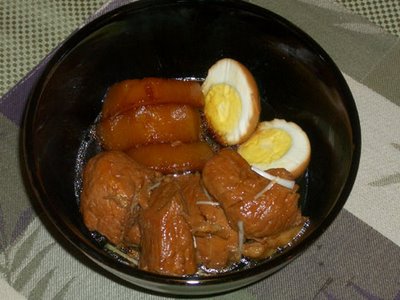I had a bit of cold this past week, so I haven't had a chance to update my blog. While I was sick, my wife and I got to catch up on some of the TV shows. I have Media Center on my computer, which can operate like Tevo, so we record whatever we are interested in. It's nice since we can fastforward all the commercials. We had been going out or busy for some reason or another, so we were about 30 hours worth of TV shows behind. Nice thing about having it on my computer is that we can skip all the crap. On some shows, like American Idol, we can watch the two hour show in an hour, since we fast forward all the commercials plus any time Ryan Seacrest is speaking.
Speaking of which, the gray haired Taylor Hicks won the Idol. Some article compared to him as the PT Cruiser, he is old but he is also new. I thought that was funny. I heard that this season was better than the previous years. I enjoyed the finale with all the guests this year. Hopefully the producers can make the next season just as successful and entertaining.
Alright, so this site is supposed to be for "easy Japanese recipes" but I think I will post some difficult recipes once in a while. When I say difficult, all that means is that it just takes more time, like butanokakuni I'm introducing today. There doesn't seem to be any official name for this dish in English, so I'm going to call it "tender pork." I read on Obachan's Kitchen & Balcony Garden blog that it's commonly called "braised pork belly" or in Hawaii called, "shoyu pork" but they didn't strike me, so I decided to choose something else. My wife used to call it "two-day pork" since the izakaya near our apartment in Yokohama advertised their kakuni as "super tender from being cooked for two days."
IN JAPANESE: buta-no-kakuni
CATEGORY: Meat
COOKING METHOD: Boiled
DIFFICULTY: Difficult
SERVES: 2 people
LENGTH OF TIME: 4 hrs
 INGREDIENTS:
INGREDIENTS:
1 lb of big pork chunk
1 tsp oil
6 half inch pieces of ginger (see TIP: Ginger)
2 green onions (just the green parts)
1 cup of sake
1 TBsp brown sugar
1 TBsp regular white sugar
1/2 cup soy sauce
1/4 cup mirin
some daikon (optional)
2 boiled eggs (optional)
HOW TO:
Normally in Japan, people use the fatty belly part of the pork for this dish. But I find that most American people, including my wife, take the fat off when they eat. What a waste, considering that about a third of the belly meat is fat. So this time, I decided to try using a non-fatty pork part. I'm not sure how common this is, but I found a pork chunk called "country style ribs" at my supermarket, which oddly was boneless.
First cut your choice of pork into pieces. They should be about twice the bite size.
In a sauce pan, drop about a teaspoon of vegetable oil and turn the heat to medium. When the oil is hot, put the pork pieces in the pan. Rotate the pieces on all sides until they are no longer pink on the outside. Fill the pan with 2 cups of water and 1 cup of sake (I used 1/2 cup of cooking sake and 1/2 cup of real sake), and reduce the heat to low. Add pieces of ginger and green parts of the green onion as well. Don't use the lid, as the alcohol in sake needs to evaporate.
Let it simmer for 2 to 3 hours (if you have time, I recommend 3 hours, but 2 hours is fine, too). While you let it simmer, add some water every half an hour to make sure that all parts of the pork stay under the water at all times.
Tear a piece of pork after it had been cooking for 2 to 3 hours and make sure it's really tender (it should be from all that sake and cooking!!) Then take out the ginger and green onions out. If possible, take the pork pieces out, and strain the soup into a separate pan, so you will have much cleaner soup stock for the next step.
Place the pork pieces back into a pan with cleaner soup stock. If you want to add daikon and boiled eggs, this is your time to do it. Just make sure that water level is higher than your food (if not, add more water). Add 1 table spoon of brown sugar and another table spoon of regular white sugar. If you don't have brown sugar, 2 table spoons of regular sugar is fine, too. Also add 1/4 cup of soy sauce and 1/4 cup of mirin. Let it simmer on low heat for half an hour.
Add 1/4 cup more of soy sauce, and let it simmer for half an hour longer. Adding this half of soy sauce later helps pork from getting too salty from soy sauce. And the pork pieces should be mighty tender by now. You could garnish it with thinly sliced white part of the green onion like I did.
No comments:
Post a Comment